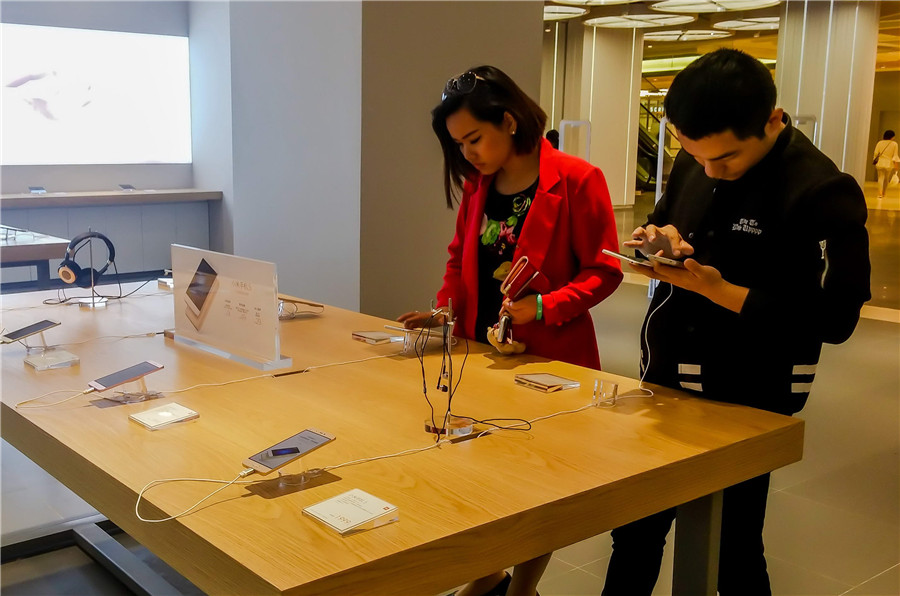
Lunch hours are fast becoming a window of opportunity for retailers and e-commerce firms as a growing number of Chinese consumers are making purchases during the two-hour window.
The time window of 11 am to 1 pm on working days is the peak time for consumers to browse e-commerce platforms, according to data from Weitao, a microblogging service for brands on Taobao, China's largest e-commerce platform under the Alibaba Group.
According to the National Bureau of Statistics, the share of consumption in the overall output value has been climbing steadily for the last eight years.
Demand for fast-moving consumer goods has fallen sharply in the last five years in China, with growth rates tapering off from the double-digit levels to 5 percent currently, an indication of the change in growth, demand patterns, according to data from Kantar.
Young people in urban areas who have a fast-paced work life are seen as the backbone for imported and niche products, health-related and even night economies.
Meanwhile, younger consumers in small towns with more disposable income are found to have a preference for high-end domestic brands.
Today’s Story in the Story looks at how the working-class are using their lunch breaks to engage in activities other than eating.

People shop for mobile phones at a Xiaomi store in Shanghai during their lunch break. [Photo by Wang Gang/For China Daily]
Today, busy office employees prefer to go shopping, go to gyms, watch movies, and get a haircut during their lunch break time, in addition to taking a nap. As most people get up early for work, some choose to take a nap in the office after their lunch, but it is usually hard to find a comfortable place to sleep.
Products that can help people to sleep better are enjoying increasing sales on online platforms. They include specially shaped nap pillows, eye masks, earplugs, blankets and foldable beds.
Several kinds of nap pillows designed for offices and students, which are ergonomic and suitable for sleeping at desks, have each reported more than 5,000 units of sales in just a month on Taobao.
"I bought a foldable bed and I usually take a nap in the office. Sometimes, I go out to eat with colleagues and go shopping at nearby malls. Taking the lunch break time to go shopping is quite convenient as the stores are close and it won't take away my evening time with family and friends," said Tian Shen, a 27-year-old bank employee in Beijing.
On WeChat and other popular social media platforms, many consumer-oriented retailers choose to release new products, advertisements, and launch promotional events during the lunch break time, as they are aware that more people tend to play with their mobile phones and log into social media apps during this time.
The lunch break period is also creating new consumption demand but compared with the mature holiday economy and other sectors, it is still in its initial stages of growth, and there are not many special events and products tailored for lunch breaks yet, experts said.
"With the improvement in life quality, people have shown a more diversified consumption demand. Lunch breaks can not only eliminate the tension of work during the day, but they can also help office workers maintain a good mood," said Neil Wang, president of Frost and Sullivan's China operations.
"Retailers should make good use of the golden period and break their traditional thinking patterns. They can focus on the elements of fun and leisure, and launch more personalized services to attract consumers," he said.

A customer hugs a giant stuffed toy at the newly opened Costco outlet in Shanghai. [Photo/China News Service]
Meanwhile, some office workers prefer to watch movies during their lunch break for relaxation, as the time period gives them more freedom and they don't need to worry much about family and children.
It shows that more people who are aged between 30 and 39 prefer to watch movies during their lunch break compared with weekends. For movies that start from 11 am to 12 pm, the percentage of moviegoers in the 30-39 age group stood at 37 percent during the lunch period.
Besides, frequent moviegoers prefer to watch movies during this period on weekdays than on weekends. Nevertheless, during the lunch break time on workdays, the number of moviegoers is not that high, and the major movie viewing time is still evenings, Maoyan data showed.
"The lunch break economy in China is still in its embryo, and it is expected to create huge consumption potential. Still, many retailers don't have special services and products tailored for the time period, and there are ample business opportunities waiting to be explored for the detailed segment markets," Wang said.
(Produced by Nancy Yan Xu, Brian Lowe, Lance Crayon and Paris Yelu Xu. Music by: bensound.com. Text from China Daily.)


